Here are the read noise vs one-dimensional low pass filter size curves for the whole-f-stop ISOs of the Nikon D4. Unfortunately, the D4 chops off the left side of the histogram for dark-field images in its in-camera raw processing:
Here they are referred to the sensor:
You can see that, up until about ISO 800, increasing the in-camera ISO setting helps a lot in reducing read noise. You can also see that there’s something funny going on for the vertical averaging curve at ISO 400.
If the read noise were white and Gaussian, here’s what the sensor-referred curve would look like:
Normalizing the actual sensor-referred curves to the ideal ones results in these plots:
This is mid-pack low-frequency read noise performance. It looks like skipping ISO 400 might be a good idea.
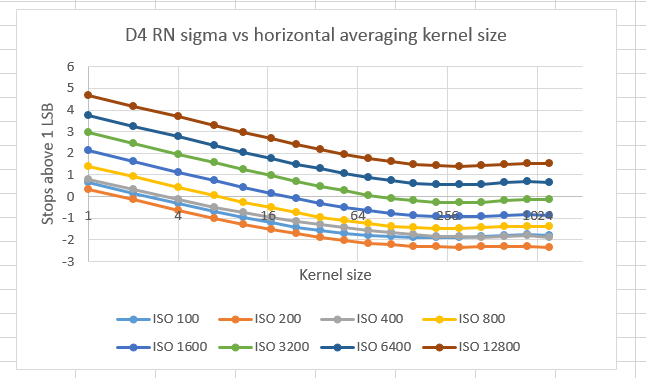
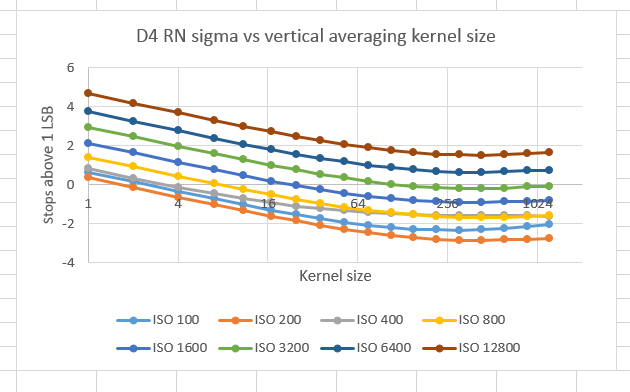
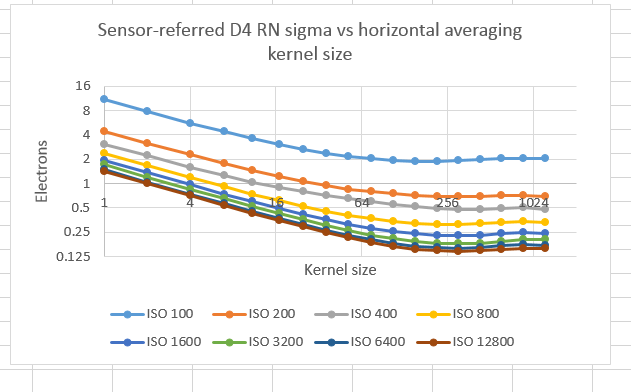
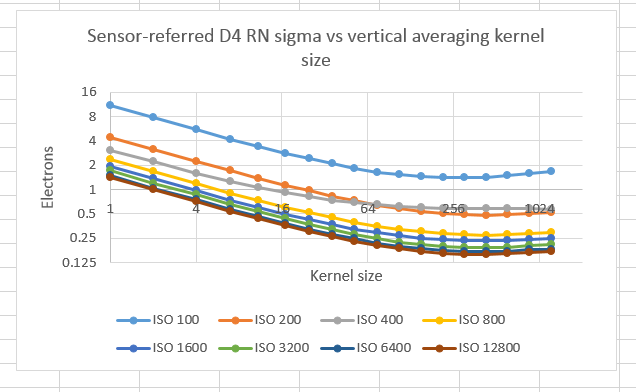
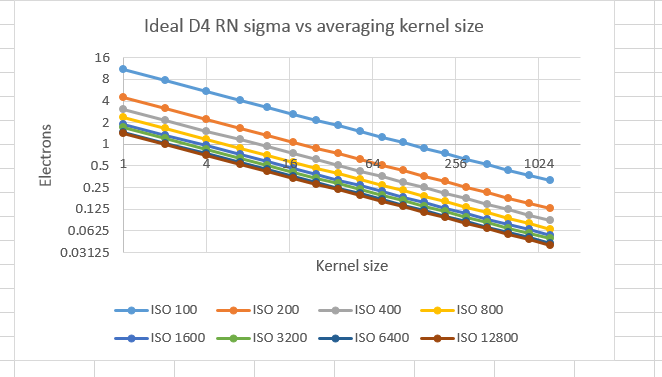
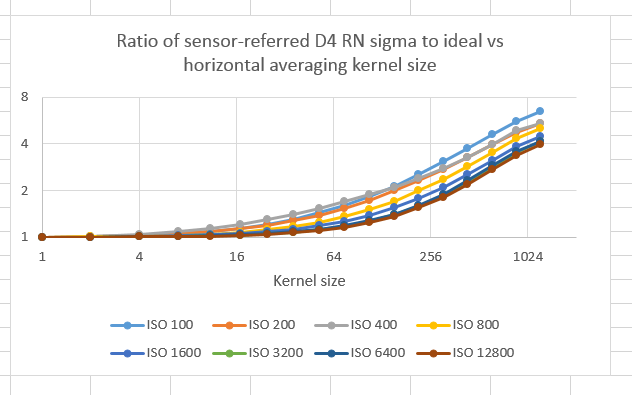
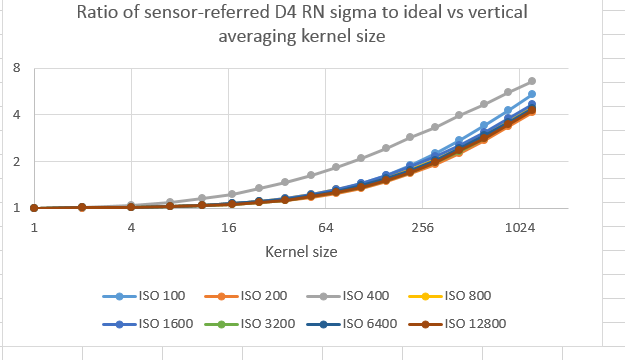
Leave a Reply